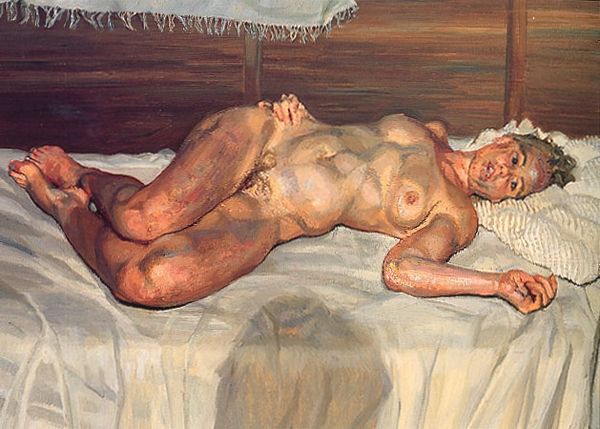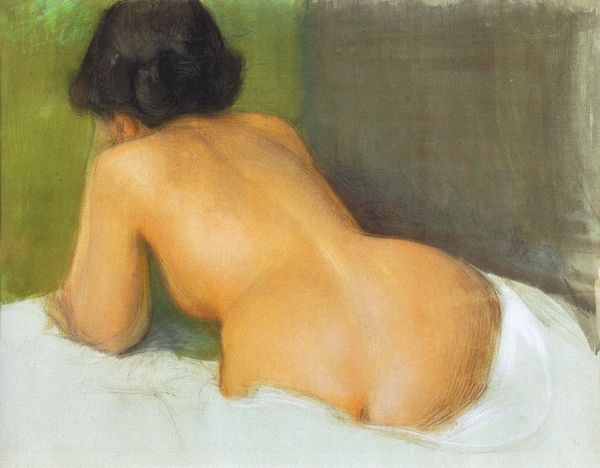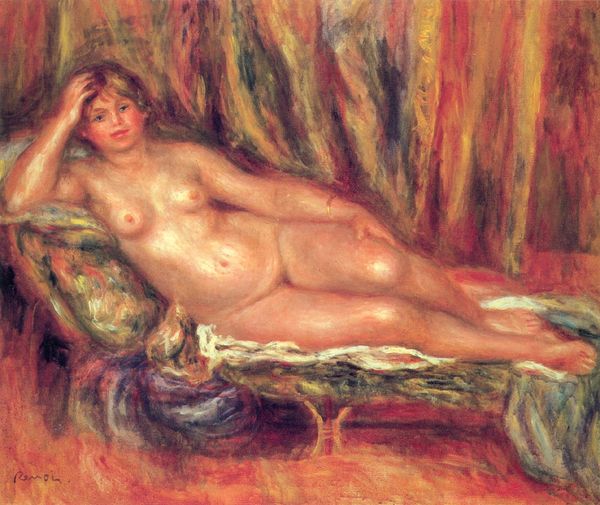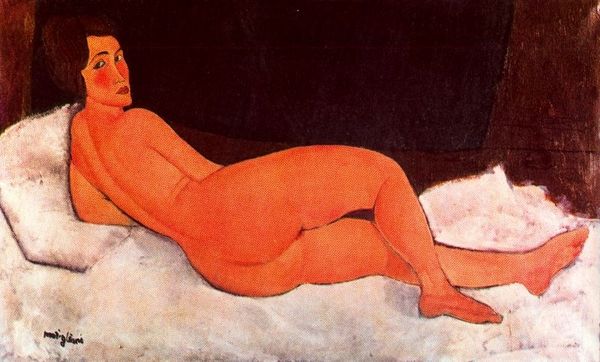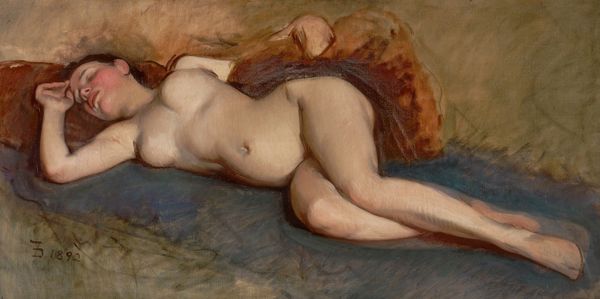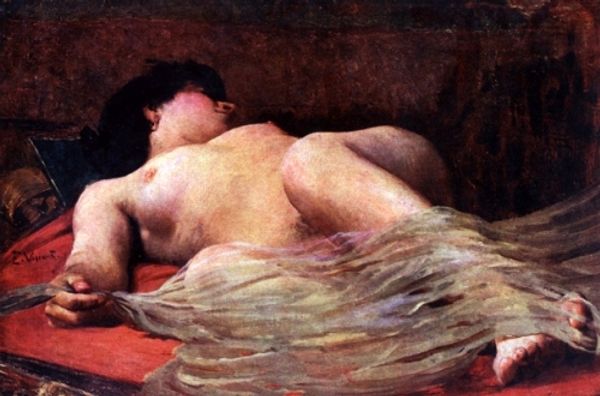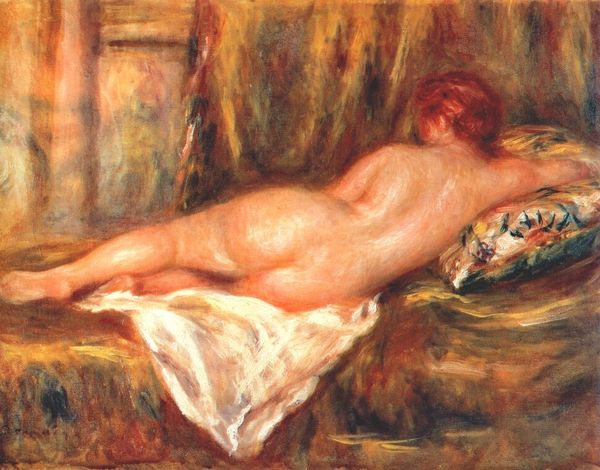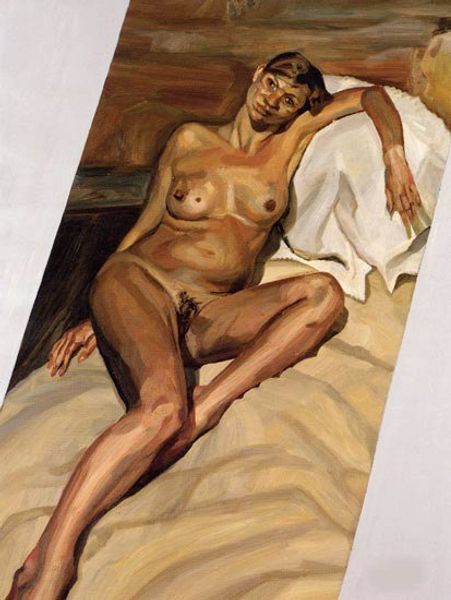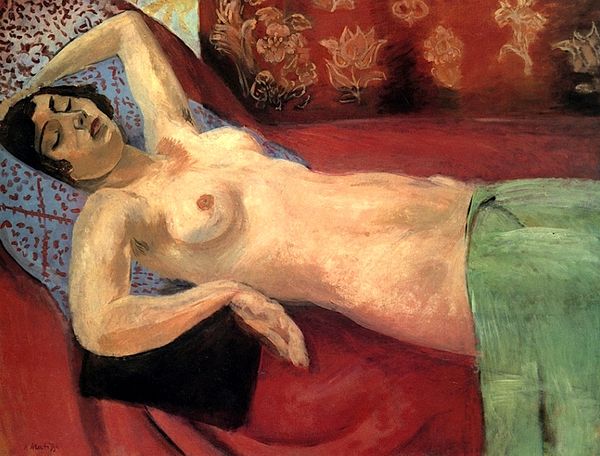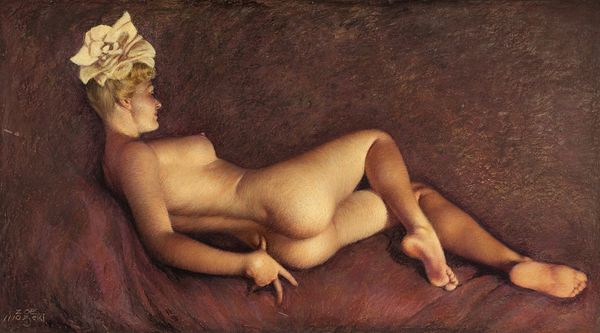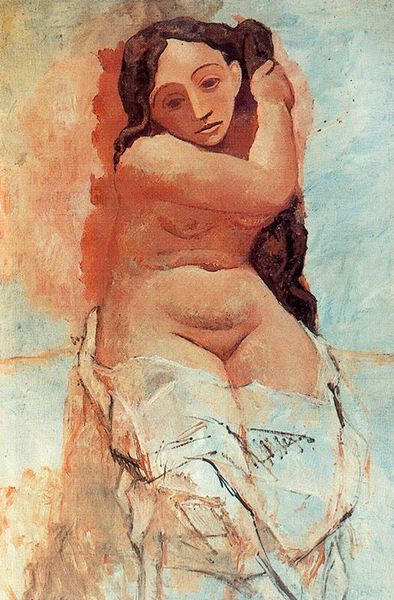
Copyright: Public domain
Curator: Let’s turn our attention to Vincent van Gogh’s oil on canvas, "Nude Woman Reclining, Seen from the Back," created in 1887. Editor: My first impression is how tactile this work is. You can almost feel the rough texture of the canvas and the impasto technique van Gogh employed. It's raw, yet strangely intimate. Curator: Indeed. Van Gogh’s application of paint here seems less concerned with idealised form and more interested in conveying the reality—and even vulnerability—of the human body. This approach contrasts greatly with traditional representations of the nude throughout art history. Editor: Precisely. And that stark contrast interests me from a structural point of view. The composition itself draws your eye along the figure’s spine and braid. He creates visual pathways. Observe also how the curve of the back echoes the curve of the pillow, forming a sort of compositional rhyme. Curator: The braid could also represent the constraints and societal expectations placed on women during that time. Her face is turned away, almost erased, emphasizing a loss of identity. There’s an underlying sense of melancholy. Van Gogh uses the female nude as an emblem, almost an allegory of suppressed emotion. Editor: I see your point, but I hesitate to ascribe such a specific intention. What captivates me is that, in its lack of polish, it becomes less about depicting a person and more about capturing pure physical form. I look at the materiality first. Curator: Of course. Still, I find it difficult to disassociate the historical context and the powerful emotions Van Gogh channeled into his work. Even without a visible face, we still see a poignant representation of womanhood and the emotional weight it carried during the late 19th century. Editor: An emotional tension, to be sure. For me, the power lies in the materiality—the way the painting transcends mere representation through its forceful application of paint, pushing into pure texture. Curator: It strikes me now that both the emotional interpretation and the formalism are inseparable. Thank you. Editor: A perspective well-considered, given this particular painter and work.
Comments
No comments
Be the first to comment and join the conversation on the ultimate creative platform.
